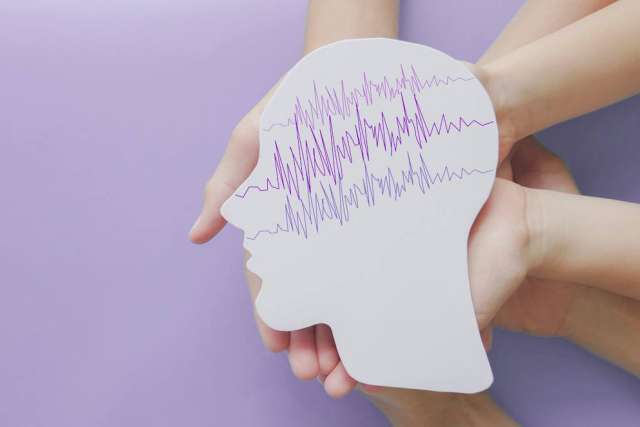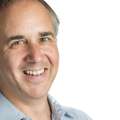It has been more than 30 years since Dustin Hoffman’s Oscar-winning performance in the movie “Rain Man” defined autism in the minds of many people. When the movie came out, there was no widespread public understanding of autism: in one memorable scene, Hoffman’s character is seen by a psychiatric nurse who has never heard the term “autistic.”
Since that time, our awareness and understanding of autism has expanded dramatically. Along with increased advocacy and more diverse portrayals of autistic individuals in film and television, science has opened new doors to broaden our understanding of a condition that, according to the Centers for Disease Control and Prevention, affects one in 54 children in the United States.
Genetic technology in particular has revealed the biology behind autism and brought the condition into clearer focus. In a review article celebrating the 30th anniversary of the journal Human Molecular Genetics, UCLA Health’s Dr. Daniel Geschwind traces how genetic studies of autism have grown more sophisticated as the cost of DNA sequencing has plummeted and researchers have found new ways to study many genes simultaneously in large populations.
“Advances in technology — as well as collaborative efforts that pool large numbers of families — have fueled the ability to identify genetic factors that contribute to autism,” says Dr. Geschwind, who is the Gordon and Virginia MacDonald Distinguished Professor of Human Genetics, Neurology and Psychiatry at UCLA.
Along with these advances has come a wider recognition and acceptance of neurodiversity. While “Rain Man” portrayed a severely disabled autistic adult, unable to live on his own, autism manifests very differently in different people, and attitudes toward treatment are similarly diverse.
Dr. Geschwind emphasizes that the goal of autism research is not to eliminate or “cure” all forms of autism. “There is benefit to neurodiversity,” he says. “You really only want to treat people who want to be treated, or who have a severe condition that makes it very difficult for them to function independently. That’s very different from someone with moderate social dysfunction.”
From ‘refrigerator mothers’ to DNA analysis
Autism spectrum disorder, or ASD, encompasses a host of neurodevelopmental disorders with different biological causes. Symptoms of ASD include difficulty with appropriate social interaction, impaired communication skills, repetitive movements such as rocking or flapping, and heightened sensitivity to sensory stimuli, such as smells or sounds.
In 1943, child psychiatrist Leo Kanner documented the first well-defined cases of autism in the medical literature. Though Kanner described autism as an “innate” condition, the popular view at the time, steeped in Freudian psychology, was that it was environmental, caused by aloof parenting. This so-called “refrigerator mother” theory led to untold angst among parents before it finally fell out of favor during the 1970s, as more evidence accumulated that autism was at least partly inherited.
"There is benefit to neurodiversity. You really only want to treat people who want to be treated."
Dr. Geschwind
At that time, genetic studies relied on pedigrees, family trees that illustrate how a disease occurs throughout a family. Studies of twins demonstrated that autism has a strong genetic component, and observations of “first-degree relatives” — parents and siblings — revealed that these family members often exhibit “sub-clinical” autistic symptoms, i.e., symptoms that are not severe enough to lead to a diagnosis.
While these studies could point to a genetic basis for autism, they couldn’t pin down the specific genes involved. The DNA technology available at the time “couldn’t really study the whole genome at any reasonable resolution,” says Dr. Geschwind.
Another obstacle researchers faced was that autism is genetically heterogeneous, meaning that different genes in different people may be causing the symptoms. “The more different kinds of genes contribute to a condition, the larger the sample you need to get statistical power,” Dr. Geschwind says. “Samples early on weren’t large enough to find reproducible results.”
To expand the pool of genetic samples from autistic people and their families, Dr. Geschwind and colleagues established the Autism Genetic Resource Exchange in 2001 in collaboration with the Cure Autism Now Foundation. This was a unique partnership of researchers, public and private funding, along with families, and was driven and overseen by the parents of children with autism.
The collaboration enabled researchers to share biological samples collected from their patients and look for genetic markers in a larger population of patients and non-autistic family members. This type of interaction helped change the landscape of research into the causes of autism and set the stage for many such partnerships that are ongoing today.
Searching for the genes
Around that same time, genetic technology progressed to a point where researchers didn’t have to laboriously test one gene at a time; methods for examining the entire genome became faster, cheaper and more accessible. The combination of whole-genome surveys with studies incorporating thousands of patients has revealed quite a few promising candidate genes.
There are two ways that genetic defects can cause autism. One is a disruption to a single gene that plays a large role in brain development. “These are generally associated with a lot of developmental disorders,” Dr. Geschwind says. “If you think of development as a train on a track, these large mutations knock the train off the track.”
About 20% of autism cases result from a single-gene mutation, Dr. Geschwind says. These are typically accompanied by other developmental abnormalities, such as fragile X syndrome or Rett syndrome. They generally arise spontaneously in the individual rather than being passed down from parents.
The other 80% of autism cases are likely due to a combination of multiple genetic changes. Again, the availability of larger populations helped researchers comb the genome looking for aberrations that popped up more frequently in autism cases.
Analysis of these genes show certain common functions. For instance, some of the mutations affect genes that help brain cells communicate with each other through a process called synaptic signaling. The synapse is the junction between two brain cells; signaling at the synapse drives the formation of connections between brain regions.
Disruption of synaptic signaling can change the way the brain processes social cues or sensory stimulation. Dr. Geschwind points out that such mutations have persisted throughout evolution because they can, under certain circumstances, be beneficial.
“These genes increase susceptibility or predispose people for autism and related conditions because they affect brain development,” he says. “Because of these genetic factors, the brain develops and functions slightly differently, and those differences can provide cognitive advantages, such as increased attention to detail.”
The genetic heterogeneity “is consistent with the extremely broad spectrum that autism represents, from those with exceptional talents relative to neurotypical individuals, to those with substantial cognitive and behavioral challenges,” he says.
"The more specific we can be about diagnosis, the more we'll move autism into mainstream medical treatment."
Dr. Geschwind
“This has to be recognized when we are talking about autism — now more than ever we know that it is not a single condition. However, understanding the genetic causes can help us define therapies that will reduce burdens, and improve quality of life, which is the ultimate goal.”
The newest research methods allow Dr. Geschwind and his colleagues to study multiple genetic changes simultaneously, as a network. By creating maps of genetic interactions, they can start to understand how genes influence each other. Many autism-associated genes appear to feed into the same molecular pathways. Understanding exactly how these pathways drive brain development will help researchers find targeted treatments for autism.
“The more specific we can be about diagnosis, the more we’ll move autism into mainstream medical treatment,” Dr. Geschwind says, explaining that the fact that the condition is defined by its symptoms, not its cause, makes it all the more important to recognize that different people will have different causes that underlie their symptoms.
“Understanding who’s going to benefit from which therapy is key,” he says.
Learn more at the UCLA Center for Autism Research and Treatment.
Caroline Seydel is the author of this article.




